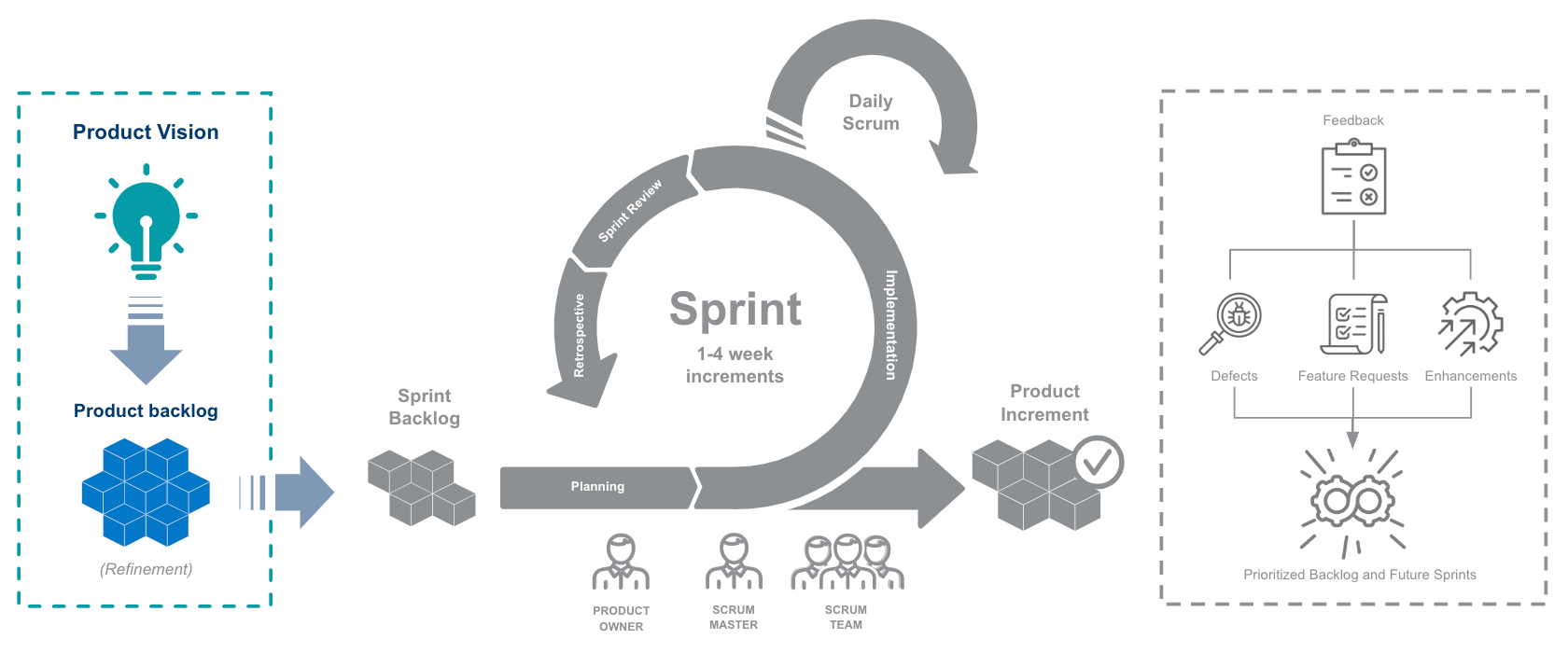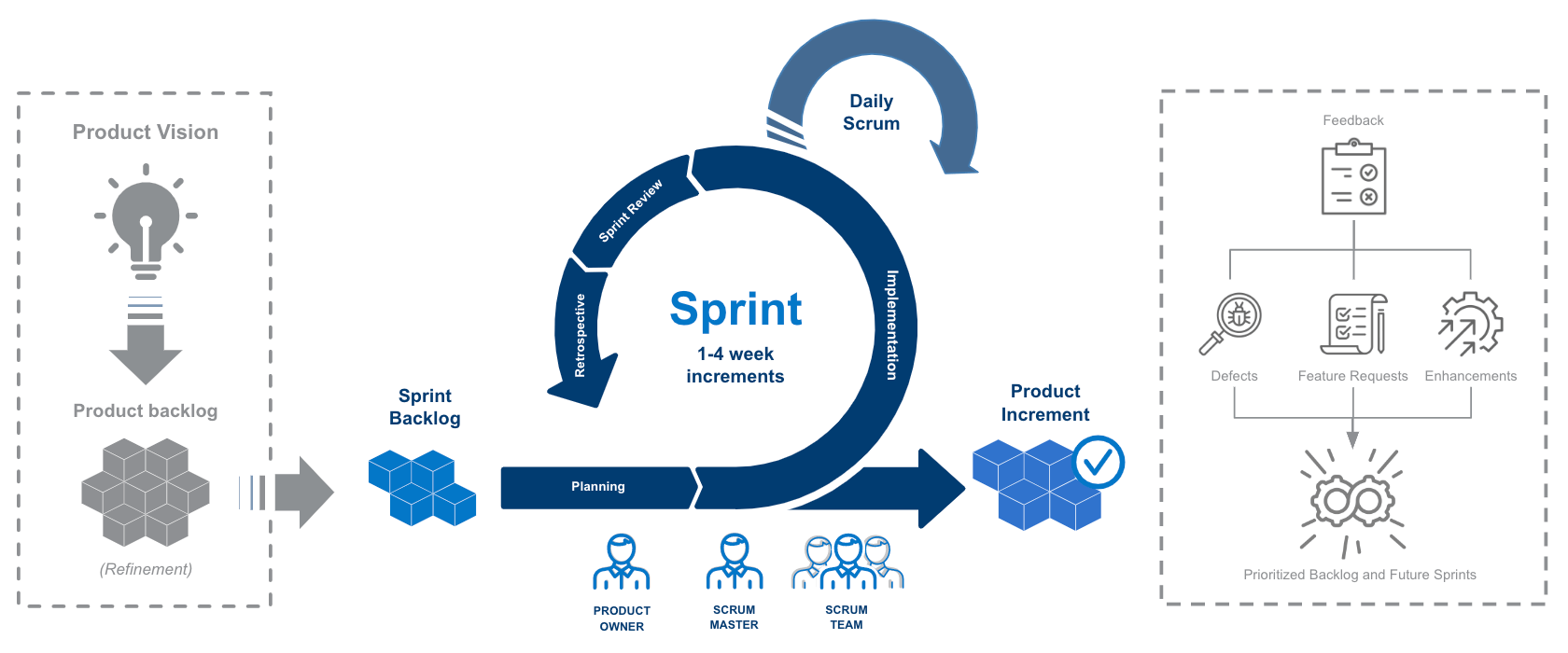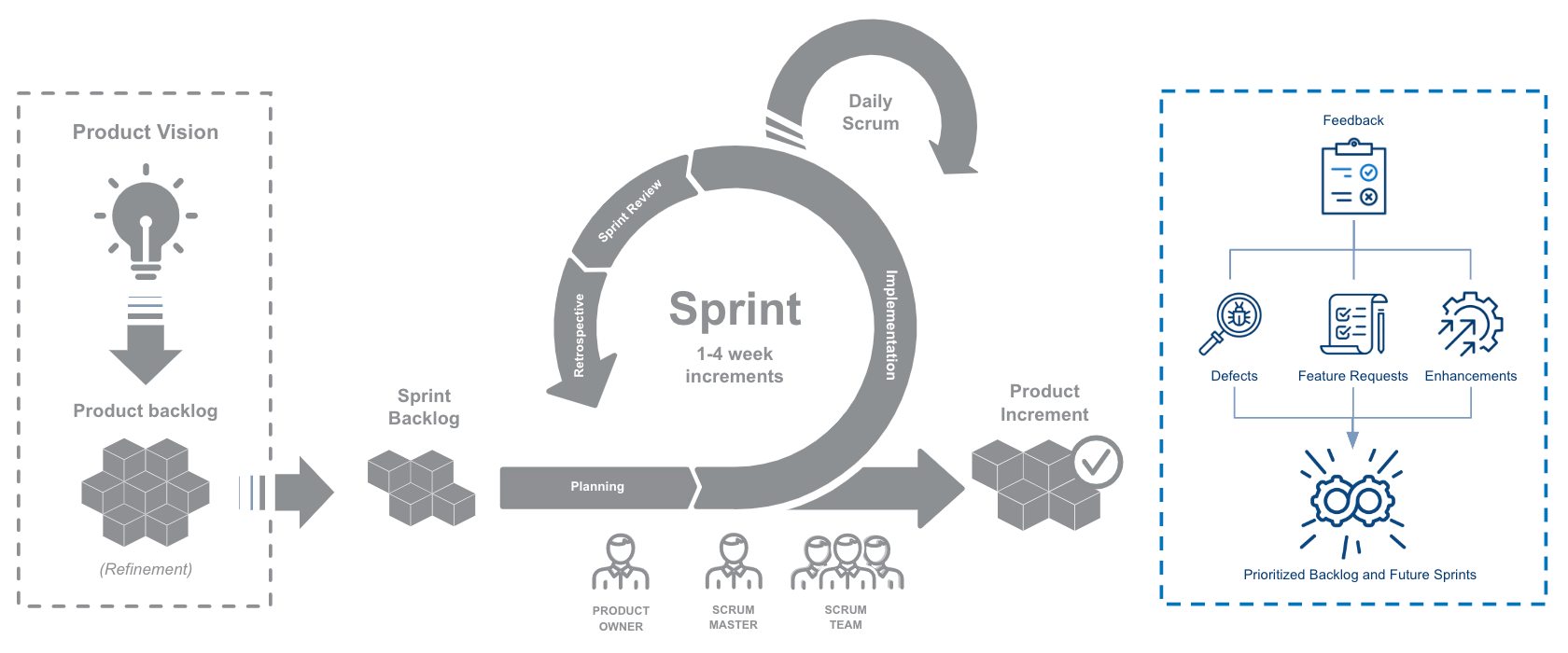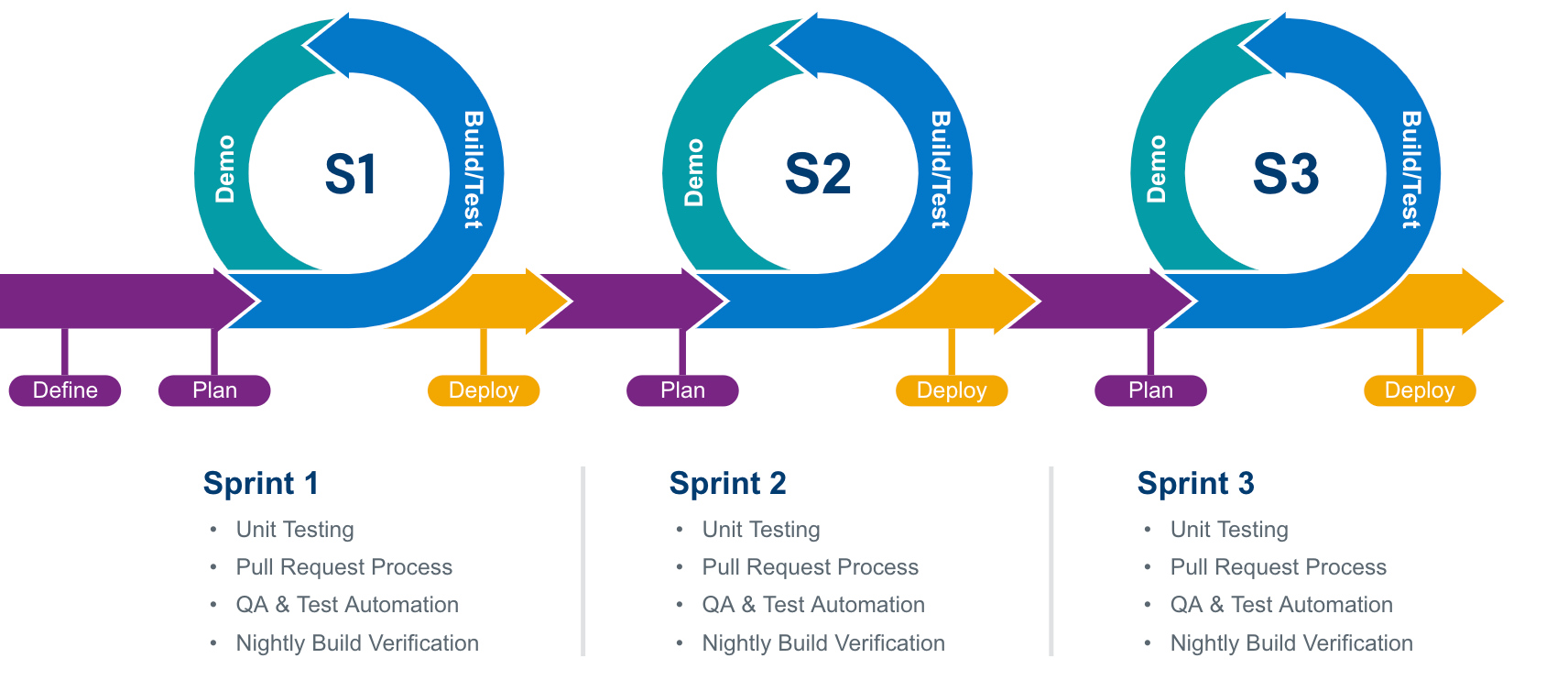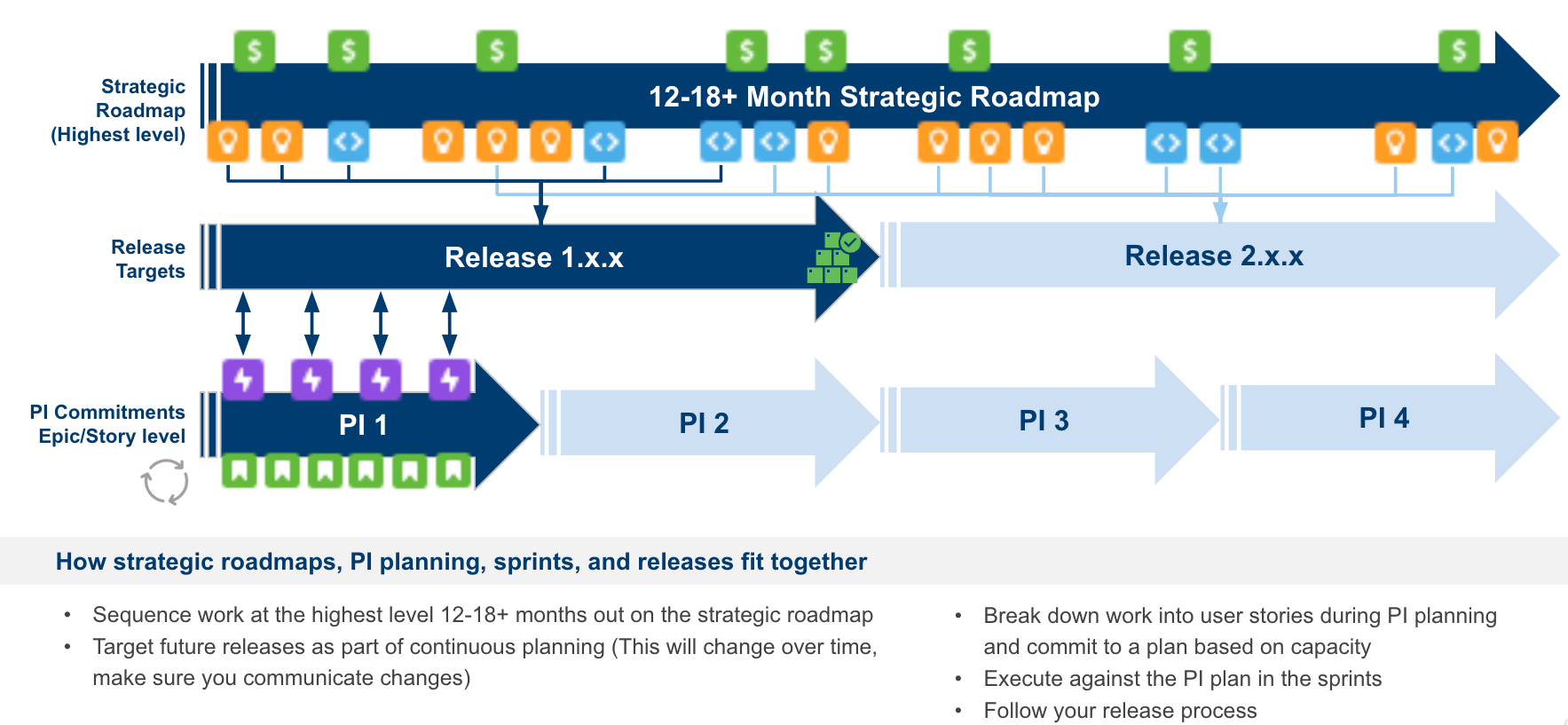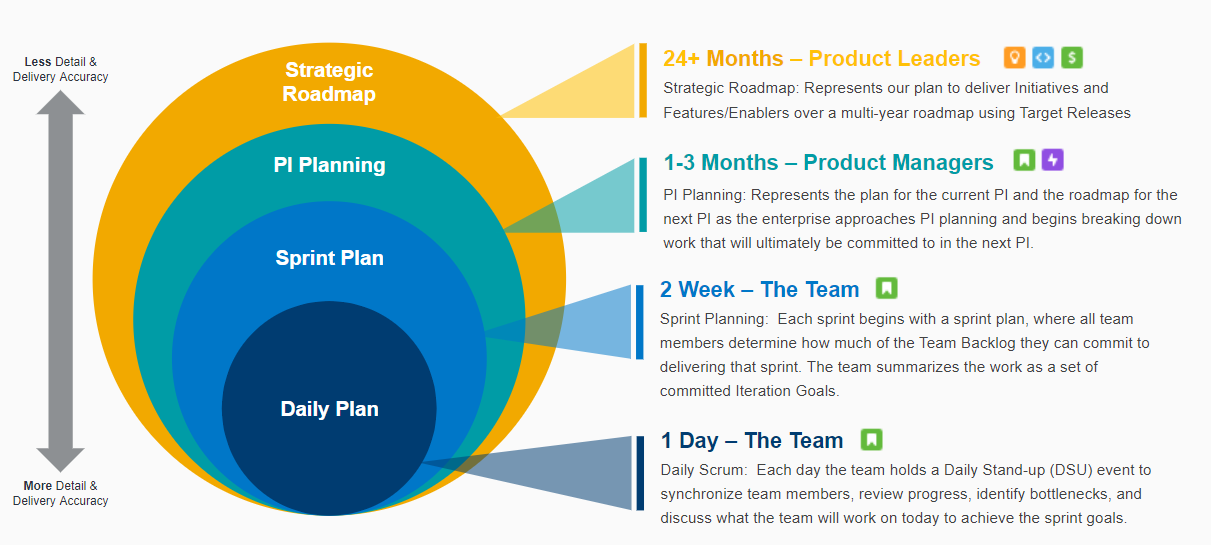Jira also has many useful tools for supporting Agile ceremonies including standups, sprint planning, PI planning, retrospectives, and so forth. For additional information on implementing Jira for these use cases, visit the resources below from the FAS Agile in Action sessions.
- Agile in Action 5 - Using Jira to Support Agile Recording
- Agile in Action 5 - Using Jira to Support Agile Questions & Responses
- Agile in Action 5 - Using Jira to Support Agile Presentation Slides
Scrum Framework
Scrum Framework Using Scrum within Agile enables development teams to constantly re-evaluate development progress, adapt to evolving needs, and contribute to an overarching vision that comes about from the product owner. This vision informs what is included into the product backlog, which is then in turn pulled into a sprint, and planned, implemented, and reviewed over the course of the sprint. The scrum master and scrum team take a hands-on role in producing product increments that help to gradually realize the product vision. Check out the graphic below to learn about the three components of the Scrum Framework and how they work together to ensure the best possible product delivery. Looking for templates to jump start your project documentation throughout the agile framework? Visit the Agile Product Templates.
Scrum Applied with Iterative Development
The iterative nature of scrum enables product development to happen gradually instead of development occurring all in one phase and the release occurring all at once. This gradual, iterative process allows for more robust development that is less susceptible to bugs and defects. It also allows the product to be more tailored to what the product owner and business users want and encourages product increments to be flexible and easy to be incorporated into the existing product.


